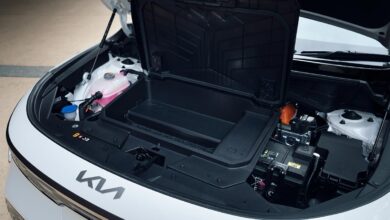Innovations in Advanced PCB Manufacturing Processes

Manufacturing of advanced printed circuit boards (PCBs) is a demanding process shaped by the needs of precision manufacturers building next-generation products. Consumer electronics, automotive systems, and telecommunications equipment, to name just a few, all rely on PCBs that meet stringent standards for durability, reliability, and performance. These industries often push the boundaries of PCB design and production to create devices that operate under varied and often extreme conditions.
Why do they need this durability and reliability? Because when it comes to mission-critical hardware, they must take into account potential breakdowns, damage, and even simple daily usage. Without solid and well-built PCBs, these devices can easily fail, taking delicate systems down with them.
But designing these advanced PCBs introduces its own set of challenges. The demand for smaller, more powerful electronic devices requires miniaturization and the integration of numerous components within a limited space. Engineers must navigate details like heat dissipation, signal integrity, and power distribution, while ensuring that the PCBs remain robust and cost-effective to manufacture.
Advanced Materials and Techniques in PCB Manufacturing
To meet the complex demands of modern electronics, manufacturers are turning to new materials and techniques. High-frequency laminates – which support the transmission of high-speed signals – and conductive inks – used in creating finer circuit patterns – are examples of materials that are reshaping PCB design. These advanced substrates and conductive materials enable higher efficiency and better performance in high-density designs.
What are high frequency laminates used for? Primarily to create multilayer PCBs connected with conductive ink. This allows for denser and more performant devices where most of the the electronics are sandwiched between multiple substrates. Conductive inks, in this scenario, allow for thin and flexible traces to connect from component to component, like capillaries in the body.
In fact, devices are increasingly becoming denser and denser, leading to devices that are considerably more complex than previous products. This means we must focus on new and innovative manufacturing techniques.
The most promising are High-Density Interconnect (HDI). This technology has improved PCB production by enabling more connections in smaller spaces. This is critical for modern electronics where space is at a premium. Similarly, 3D printing has introduced the possibility of rapid prototyping and customization, allowing engineers to create intricate designs with reduced lead times. By creating devices on demand, 3D printing reduces the need for a full factory, instead allowing for one-off production of PCBs.
Further, flexible and rigid-flex PCBs are gaining popularity as they offer the adaptability needed for wearable devices, foldable displays, and other applications where traditional rigid boards fall short.
The Critical Role of PCBs in Modern Electronics
– Ensuring Connectivity and Functionality: Explain how – Providing Structural Integrity: Discuss the role of – Efficient Thermal Management Solutions: Address innovative solutions in PCB design for effective thermal management, essential for sustaining performance and longevity in electronic components.
PCBs provide the necessary connectivity for critical components in various electronic systems, from basic circuits to complex communication networks. They link critical components, from basic resistors and capacitors to complex processors and communication modules, allowing seamless interaction within the system. This connectivity is vital in applications ranging from consumer gadgets to sophisticated communication networks.
Beyond connectivity, PCBs provide structural support to components, ensuring the physical integrity of devices. In environments with significant physical and thermal stress, like automotive or industrial applications, the PCB must maintain performance and reliability. As devices get hotter or begin to vibrate, PCBs must remain functional. How do PCBs maintain structural integrity in these harsh environments? Thanks to 3D printing and thermal e-ink, engineers can now design thermal management solutions like thermal vias and specialized heat-dissipating layers to handle the increased heat generated by modern components. These innovations help sustain performance while extending the lifespan of electronic devices.
Driving Innovations with Advanced PCB Manufacturing
– Enhancing Product Performance and Safety: Discuss how innovations in PCB manufacturing contribute to overall improvements in performance, efficiency, and safety of electronic products, including consumer devices, automotive systems, and medical equipment.
The role of advanced PCBs extends beyond fulfilling current technological needs; they are also driving the adoption of next-generation technologies. Innovations in PCB design are enabling the integration of IoT devices, advanced sensors, and even edge-based artificial intelligence (AI) systems. In fact, many devices are now so powerful that they can run full AI processors inside packages that once held only a few simple PCBs. These applications demand PCBs that support higher data speeds, better power efficiency, and enhanced connectivity.
Why do we want to run AI in smaller devices? Because network connectivity can fail during use, resulting in disconnection from the servers sending data and compute to handheld devices. By moving AI to these devices we can ensure uninterrupted access.
In addition to performance, advanced PCB manufacturing contributes to safety and efficiency. In automotive systems, for instance, PCBs are critical for the safe operation of advanced driver-assistance systems (ADAS). Similarly, in medical equipment, reliable PCBs ensure accurate readings and long-term functionality. These advancements help create devices that are not only efficient but also safer for end-users. The goal is to create products that can do more but can do it cheaply and with less energy usage. These new technologies are helping lead us to that point.
Innovations in PCB manufacturing are shaping the future of electronics. By addressing the challenges of complexity, leveraging advanced materials and techniques, and ensuring reliability, PCBs are paving the way for next-generation technologies. The evolution of PCBs underscores their indispensable role in modern devices, from everyday consumer gadgets to critical industrial systems.





